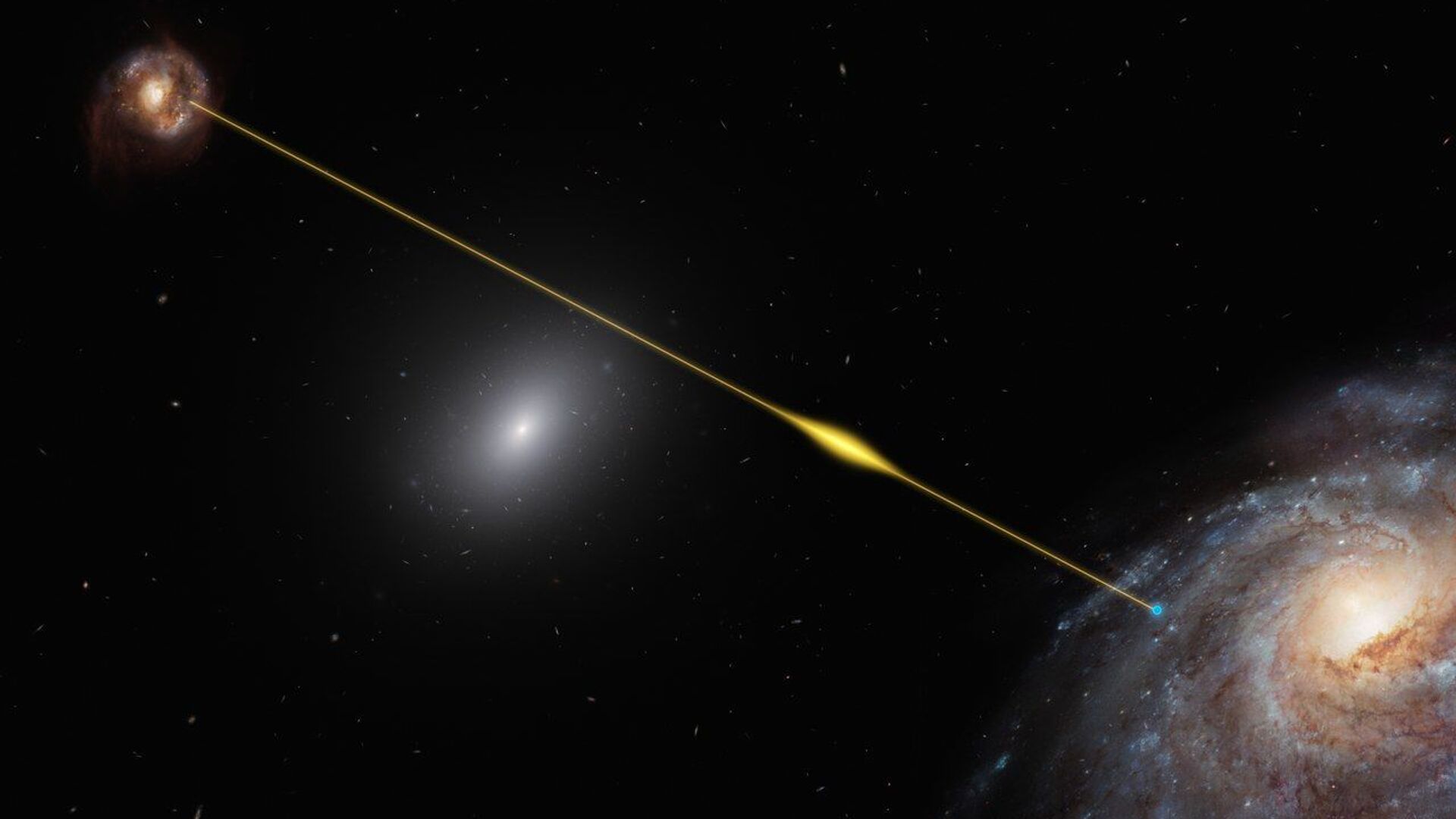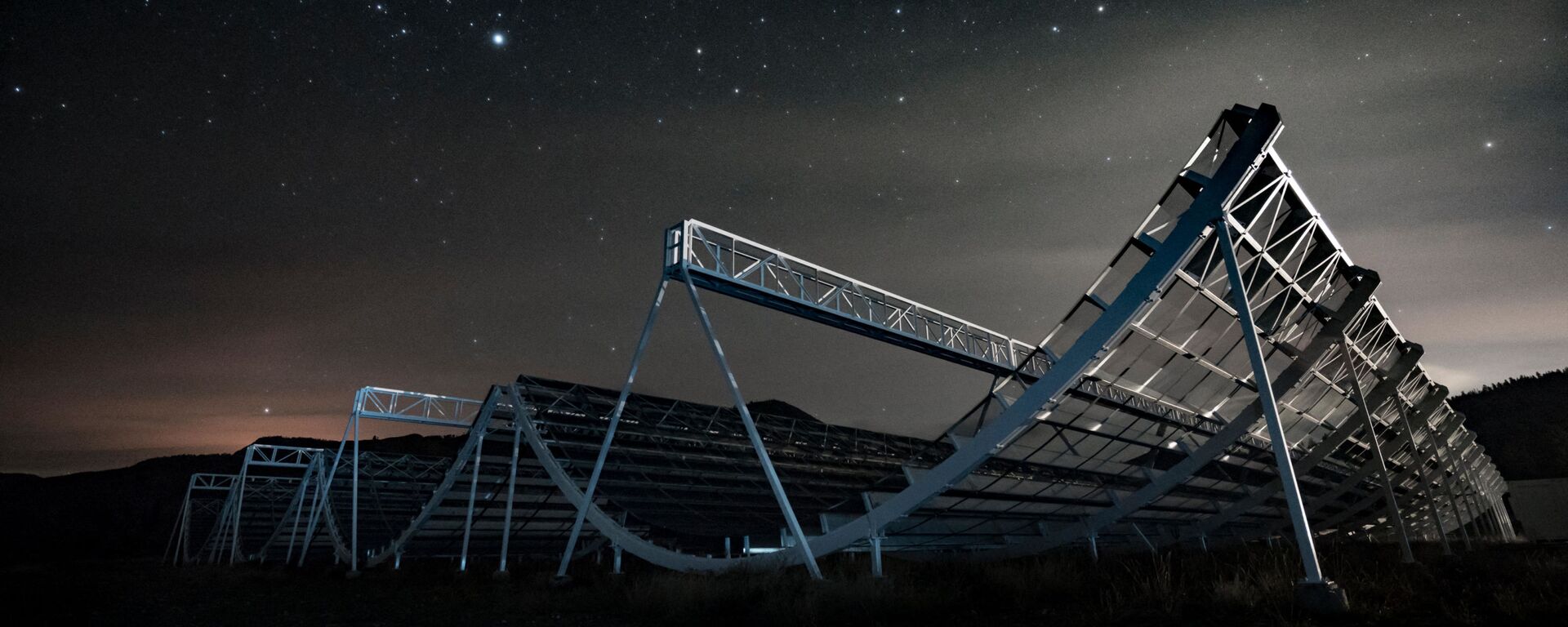https://sputnikglobe.com/20230512/scientists-uncover-repeating-fast-radio-burst-with-reversing-magnetic-field-1110304144.html
Scientists Uncover Repeating Fast Radio Burst With 'Reversing' Magnetic Field
Scientists Uncover Repeating Fast Radio Burst With 'Reversing' Magnetic Field
Sputnik International
The origins of fast radio bursts (FRB) have been the subject of intense debate since their discovery in 2007. Now, a new study has given us a glimpse into what... 12.05.2023, Sputnik International
2023-05-12T21:34+0000
2023-05-12T21:34+0000
2023-05-12T21:30+0000
beyond politics
fast radio burst (frb)
chinese academy of sciences (cas)
science & tech
magnetic field
study
https://cdn1.img.sputnikglobe.com/img/107832/70/1078327070_0:53:1280:773_1920x0_80_0_0_aa27f44f1dc2d912654c7191e2a77623.jpg
Scientists have discovered the first persistently active repeating fast radio burst in the universe that changes its magnetic field twice, a new study has revealed.After 17 months of observation of the strange energy phenomenon, dubbed FRB 20190520B, researchers discovered “the FRB’s Faraday rotation is highly variable and twice changes sign,” and that “the FRB also depolarizes below radio frequencies of about 1 to 3 gigahertz.”Such a phenomenon “could result from propagation through a turbulent magnetized screen of plasma, located 10–5 to 100 parsecs from the FRB source,” according to a news release from the Chinese Academy of Sciences, which played a leading role in the project.“This is consistent with the bursts passing through the stellar wind of a binary companion of the FRB source,” the researchers maintain.In order for such an effect to be produced, they say the signal would likely have to pass through “the halo of a companion, be it a black hole or a massive star with [solar] winds.”The monitoring of FRB 20190520B was carried out by an international team of researchers using the Parkes telescope in Australia and the Green Bank Telescope (GBT) in the United States.Officials noted that the treasured FRB was “an ideal target" for the study since “unlike all other FRBs, FRB 20190520B has produced bursts, detectable by at least one and sometimes multiple telescopes, every time it was viewed.”The study was published Thursday in the journal Science.
https://sputnikglobe.com/20210610/new-type-of-radio-telescope-detects-over-500-mysterious-fast-radio-bursts-from-distant-space-1083118776.html
Sputnik International
feedback@sputniknews.com
+74956456601
MIA „Rossiya Segodnya“
2023
News
en_EN
Sputnik International
feedback@sputniknews.com
+74956456601
MIA „Rossiya Segodnya“
Sputnik International
feedback@sputniknews.com
+74956456601
MIA „Rossiya Segodnya“
fast radio burst (frb), chinese academy of sciences (cas), science & tech, magnetic field, study
fast radio burst (frb), chinese academy of sciences (cas), science & tech, magnetic field, study
Scientists Uncover Repeating Fast Radio Burst With 'Reversing' Magnetic Field
The origins of fast radio bursts (FRB) have been the subject of intense debate since their discovery in 2007. Now, a new study has given us a glimpse into what may be behind the massive, hyper-short bursts of energy.
Scientists have discovered the first persistently active repeating fast radio burst in the universe that changes its magnetic field twice, a new study has revealed.
After 17 months of observation of the strange energy phenomenon, dubbed FRB 20190520B, researchers discovered “the FRB’s Faraday rotation is highly variable and twice changes sign,” and that “the FRB also depolarizes below radio frequencies of about 1 to 3 gigahertz.”
“We interpret these properties as being due to changes in the parallel component of the magnetic field integrated along the line of sight, including reversing direction of the field,” officials wrote in their findings.
Such a phenomenon “could result from propagation through a turbulent magnetized screen of plasma, located 10–5 to 100 parsecs from the FRB source,” according to a
news release from the Chinese Academy of Sciences, which played a leading role in the project.
“This is consistent with the bursts passing through the stellar wind of a binary companion of the FRB source,” the researchers maintain.
In order for such an effect to be produced, they say the signal would likely have to pass through “the halo of a companion, be it a black hole or a massive star with [solar] winds.”
The monitoring of FRB 20190520B was carried out by an international team of researchers using the Parkes telescope in Australia and the Green Bank Telescope (GBT) in the United States.
Officials noted that the treasured FRB was “an ideal target" for the study since “unlike all other FRBs, FRB 20190520B has produced bursts, detectable by at least one and sometimes multiple telescopes, every time it was viewed.”
The
study was published Thursday in the journal Science.



